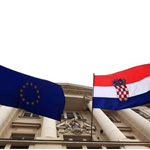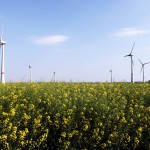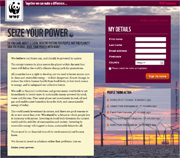 On 1 July Croatia became the 28th member of the EU. The country has started investing in wind power – indeed it is the leader of the western Balkan region, with 193.75 MW of wind turbines in operation at the end of 2012. However a new report underlines that international financial institutions must offer more support for renewables rather than fossil fuels if Croatia and its Balkan neighbours are ever to catch up with the renewable energy capacity of other EU states.
On 1 July Croatia became the 28th member of the EU. The country has started investing in wind power – indeed it is the leader of the western Balkan region, with 193.75 MW of wind turbines in operation at the end of 2012. However a new report underlines that international financial institutions must offer more support for renewables rather than fossil fuels if Croatia and its Balkan neighbours are ever to catch up with the renewable energy capacity of other EU states.
According to the report, Invest in Haste, Repent at leisure, published by civil society organisations CEE Bankwatch Network, SEE Change Net and WWF, Europe’s development banks are spending 32 times more on fossil fuels than on non-hydropower renewable energy sources in the western Balkan region. This trend means that the western Balkan countries are heading in the opposite direction of the EU goals on climate change for the years 2020, 2030 and 2050, says the report.
 Wallonia, the French-speaking part of Belgium, is considering placing wind turbines along its motorways to meet its ambitious renewable energy targets, Carlo Di Antonio, the Belgian minister of public works has announced.
Wallonia, the French-speaking part of Belgium, is considering placing wind turbines along its motorways to meet its ambitious renewable energy targets, Carlo Di Antonio, the Belgian minister of public works has announced.
The minister told Belgian radio at the end of June that he planned to come forward with a plan “in a few weeks” that will show how wind turbines can be placed “almost exclusively” along motorways and their service roads.
The plan is expected to show how a combination of large turbines of around 350 kw and medium turbines of 30-350 kw could meet Wallonia’s target of producing 4,500 GWh a year of electricity from wind by 2020. This target is a considerable increase from the 1,200 GWh generated by wind in the country today.
At the end of February, the government of Wallonia took the first steps to give greater certainty to the development of future wind turbines, when it finally agreed a new regulatory framework for the sector. It also published a draft map showing the areas in the region most likely to produce the most wind power.
 There is huge potential for wind energy in the coldest regions of the globe, a new report from the VTT Technical Research Centre of Finland suggests.
There is huge potential for wind energy in the coldest regions of the globe, a new report from the VTT Technical Research Centre of Finland suggests.
The VTT cites the latest forecasts, which show that between 45 and 50 gigawatts of wind energy will be built in cold climates by 2017. This would mean an increase of as much as 72% since the end of 2012 and investments amounting to approximately €75 billion.
VTT has conducted what it claims is the first ever study into the feasibility of building wind turbines across the globe in areas where cold climate and icy conditions place special demands on wind turbine technology. In addition to Scandinavia and Canada, these areas also include parts of Central Europe, the US and China. Cold climates represent encouraging potential for wind energy companies because of their sparse population and favourable wind conditions, says the centre.
“This is a huge opportunity,” says VTT research scientist Tomas Wallenius. “We already have the tools to harness the potential of cold climate wind energy cost-effectively.”
 Government and financial institutions around the world must pledge to invest at least US$40 billion (€30.6 billion) in renewable energy over the next 12 months as a way of fighting climate change, according to a campaign launched this week by the environmental NGO the WWF.
Government and financial institutions around the world must pledge to invest at least US$40 billion (€30.6 billion) in renewable energy over the next 12 months as a way of fighting climate change, according to a campaign launched this week by the environmental NGO the WWF.
“We are running out of time,” says Jim Leape, director general of WWF International, launching the campaign Seize Your Power. “We know that if we continue to rely on fossil fuels we will face a future of worsening air pollution and an increasingly inhospitable climate. It is now our collective responsibility to commit to the future we want. We call on political and financial decision-makers to seize their power to make the switch to clean and sustainable renewable energy and end the inertia of coal, oil and gas.”
Anyone and everyone can sign the pledge on the WWF’s website to encourage governments and financial institutions to put their money where their mouth is, and promise greater funds for wind, solar and water power. The campaign will run in 20 countries around the world and be targeted at public finance, pension funds and sovereign wealth funds.

French Environment Minister Delphine Batho
Writing in France’s prestigious centre-left daily newspaper Le Monde, Peter Altmaier, the German environment minister, and Delphine Batho, his French counterpart, underlined the need for a 2030 renewable energy target and highlighed the importance of renewables in transforming the European economy, improving energy security and reducing greenhouse gas emissions.
“We want to make the energy transition [moving to produce a significant amount of electricity from renewables] the new motor of the Franco-German couple,” stated the letter. It noted that the two countries recently decided to create a joint renewable energy office that will focus on promoting cooperation between companies, and on encouraging political and scientific collaboration on renewables.
France is aiming to reduce the share of nuclear in its electricity production from 75% to 50% by 2025, to increase the country’s energy efficiency by around 20%, and by 2020 to produce around 23% of electricity from renewables, according to Ms Batho. Germany, meanwhile, wants by 2022 to no longer produce any energy from nuclear power and by 2030 to produce at least 50% of its electricity from renewables.
 On 1 July Croatia became the 28th member of the EU. The country has started investing in wind power – indeed it is the leader of the western Balkan region, with 193.75 MW of wind turbines in operation at the end of 2012. However a new report underlines that international financial institutions must offer more support for renewables rather than fossil fuels if Croatia and its Balkan neighbours are ever to catch up with the renewable energy capacity of other EU states.
On 1 July Croatia became the 28th member of the EU. The country has started investing in wind power – indeed it is the leader of the western Balkan region, with 193.75 MW of wind turbines in operation at the end of 2012. However a new report underlines that international financial institutions must offer more support for renewables rather than fossil fuels if Croatia and its Balkan neighbours are ever to catch up with the renewable energy capacity of other EU states.






 Comments
Comments



